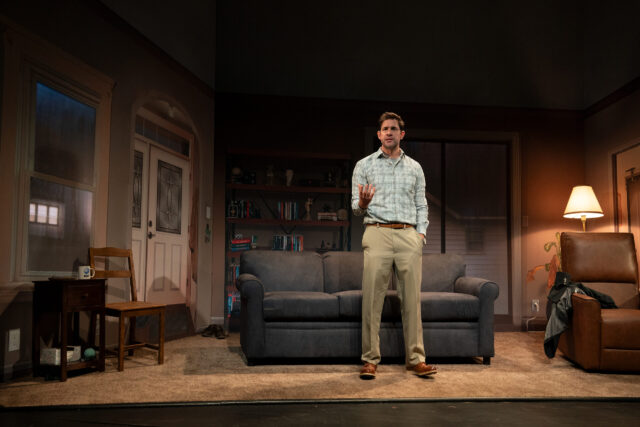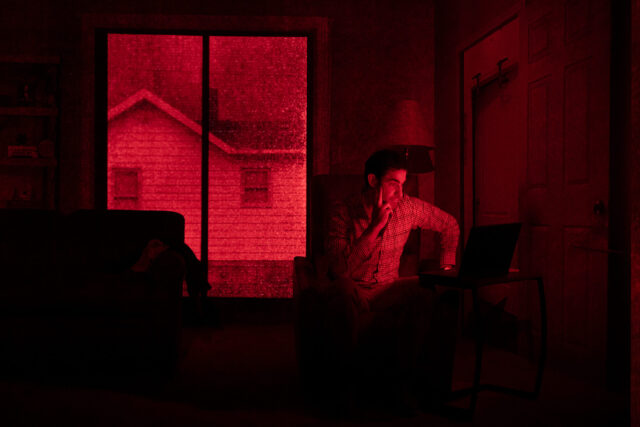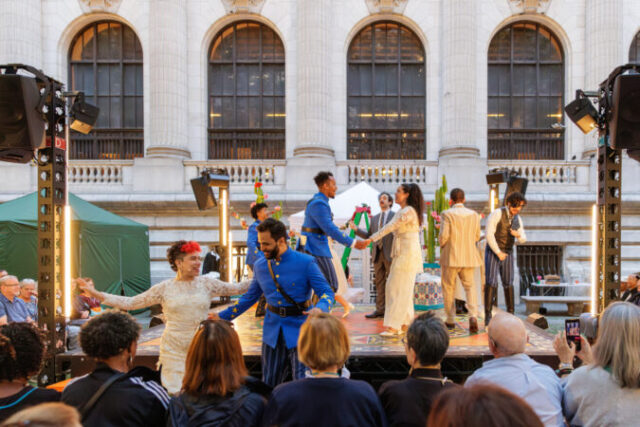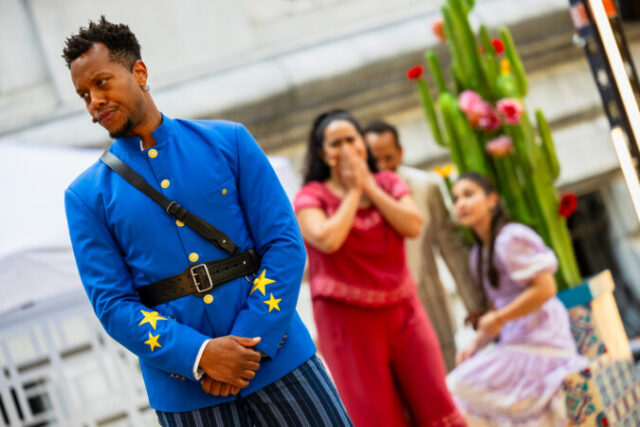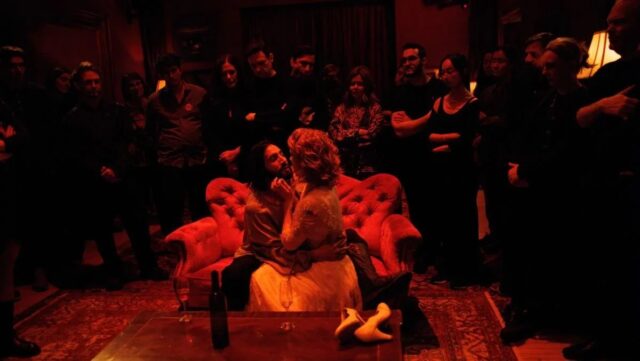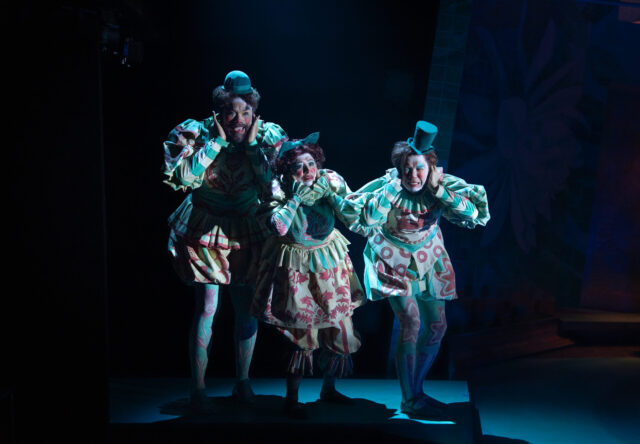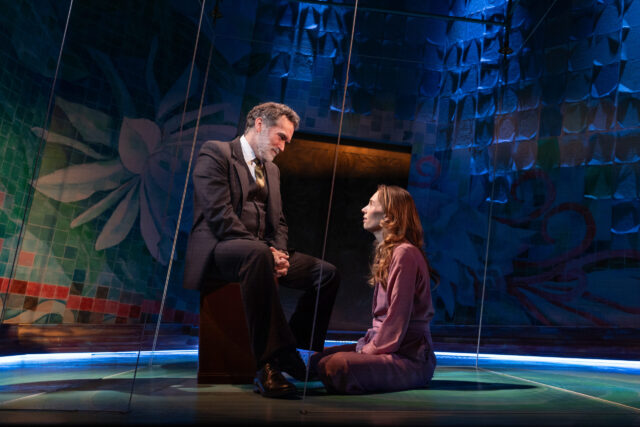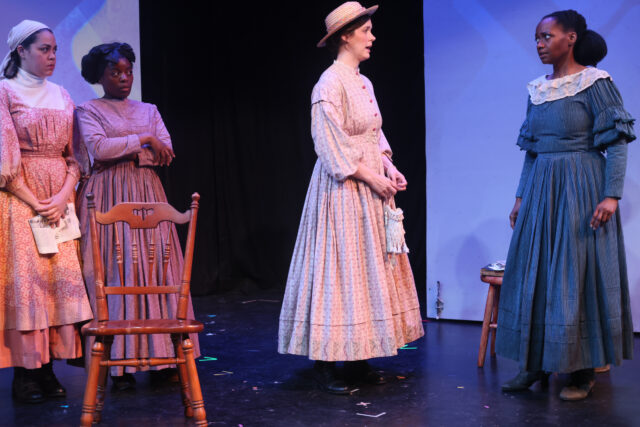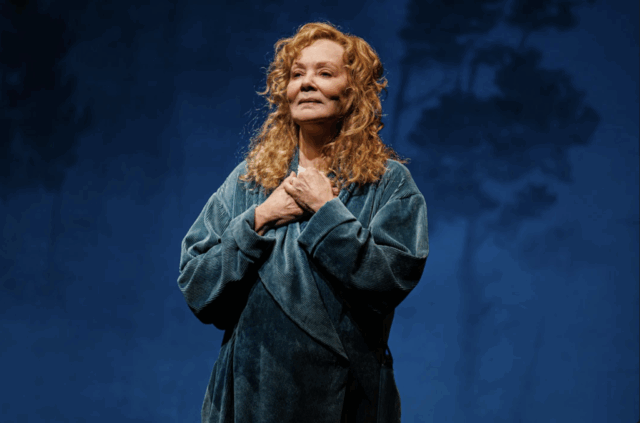
Jean Smart makes a triumphant return to Broadway in Call Me Izzy (photo by Marc J. Franklin)
CALL ME IZZY
Studio 54
254 West 54th St. between Seventh & Eighth Aves.
Tuesday – Sunday through August 17, $69-$399
212-719-1300
callmeizzyplay.com
Baton Rouge native Jamie Wax’s debut play, Call Me Izzy, is a darkly funny and insightful one-person drama, an exploration of an all-too-familiar topic: domestic abuse. Although it borders on clichéd situations and flirts with poverty porn, it never tips over the edge. The stellar production, directed by Sarna Lapine and anchored by an exquisite performance by six-time Emmy winner and Tony and Grammy nominee Jean Smart, makes it much more.
In a triumphant return to Broadway after nearly twenty-five years, Smart portrays Isabelle Scutley, née Fontenot, a woman living with her brutish husband, a pipe fitter named Ferd, in a mobile home in the fictional Louisiana Lady Trailer Park in the real town of Mansfield, Louisiana. Telling her story directly to the audience, Isabelle, who was married at seventeen and got a cemetery plot as a wedding present from her husband, has been trying to establish her own identity since she was a child, but under societal constraints and Ferd’s firm thumb she has rarely had a true sense of self.
Her sadness is immediately invoked as she discusses the blue toilet cleaner she loves using, which Ferd hates. She announces, “Blue . . . Azure . . . Sapphire . . . Swirlin’ cerulean . . . Lapis lazuli . . . Indigo!,” the colors serving as metaphors for the different shades of blue she has experienced in her life. Donald Holder’s lighting shifts accordingly.
Inspired by her fourth-grade performance of Joyce Kilmer’s “Trees” at the Arbor Day Pageant, Izzy decides to become a poet, imbued by an inner strength. Over the years, she compiles dozens and dozens of poetry journals, never showing them to anyone but finding solace in them. At the start of the play, we see her locked in the bathroom, using an eyebrow pencil to scribble on toilet paper.
“If you write something and no one ever reads it, does it even exist?” she asks. “Do I exist? Do you exist?”
Smart is a consummate raconteur, and soon Izzy’s story is revealed, involving a concerned neighbor named Rosalie Chedville, Izzy’s first library card, the free Introduction to Poetry and Creative Writing class taught by Professor Dwight Heckerling at Northwest Louisiana Community College, and Shakespeare’s sonnets; she is soon quoting from Henry VI. (Smart played both Queen Margaret and Lady Elizabeth Grey from Henry VI at the Oregon Shakespeare Festival in 1976–77.) Izzy lets Rosalie read some of her poems and becomes energized, rediscovering her purpose, and she even participates in a poetry contest where the prize is fifteen thousand dollars and a two-month residency in Brewster, Massachusetts. But when she wins the fellowship, Ferd is not exactly jumping for joy. Smart has the audience in the palm of her hand, making us understand the character’s mix of elation, confusion, and dread.
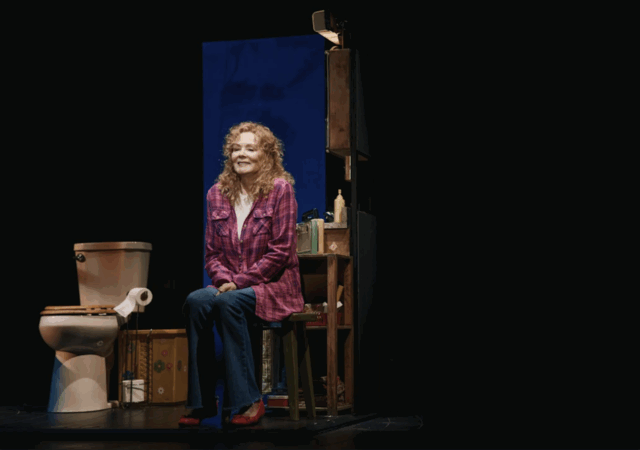
Jean Smart stars as an abused woman living in a trailer park in Call Me Izzy at Studio 54 (photo by Emilio Madrid)
Wax (Evangeline) is a stand-up comedian, actor, and longtime contributing correspondent for CBS News. Call Me Izzy, which he began writing in 1991, was inspired by the real-life story of one of his aunts and interviews he conducted with more than two dozen survivors of domestic abuse, and the play feels more authentic than manipulative or reductive. He fills the narrative with references, both subtle and crystal-clear, to the old-fashioned male-female dynamic that still remains in American culture. Her mother advises her, “The pickins’ in this town are real slim. It’s better to have a broken arm than no arm at all.”
Izzy hides her poetry in a tampon box, where she knows Ferd will not look — repurposing packaging that relates to her premenopausal years of fertility. The name of their town is Mansfield, and she points out that there used to be a Fruit of the Loom factory nearby, a company that, back in the day, primarily made underwear for men. She notes that when she first learned “Trees,” she assumed Joyce Kilmer was a woman, but when she is told he is a man, she thinks, “Well, that figures.”
Mikiko Suzuki MacAdams’s set switches from the cramped trailer park bathroom, with a working toilet, sink, mirror, step stool, and battery-powered radio, to a kitchen table and chairs outside, a black barrier sliding to create doorways and walls. Projections place the action in a forest as the sun rises and sets. Beth Lake’s sound immerses the audience in the melody of nature — and flushing — along with original music by T Bone Burnett and David Mansfield. The costumes, by Tom Broecker, range from a bathrobe to jeans and a flannel shirt.
Lapine (Dracula, Little Women) keeps things moving smoothly through the play’s hundred minutes, but the show belongs to Smart, who has the rapturous audience behind her every step of the way. At the matinee I saw, applause broke out after numerous scenes not just for Smart’s acting talent but for choices Izzy makes.
Smart was nominated for a Tony for her portrayal of Lorraine Sheldon in the 2000 revival of George S. Kaufman and Moss Hart’s The Man Who Came to Dinner and for a Drama Desk Award for her performance in Jane Chambers’s 1980 lesbian drama, Last Summer at Bluefish Cove, but most fans know her from such popular series as Designing Women, Hacks, and Mare of Easttown; she has won Emmys for roles on Frasier, Hacks, and Samantha Who? She is in full command of the stage, and her relationship with the audience is almost conversational, as if we are friends with her. She does not turn Izzy into a heroic figure or melodramatic victim but a woman who wants more, who has been taught that she should remain in her station and exhibit little or no individuality — that maybe she is at least partially responsible for the abuse Ferd heaps on her. But perhaps her time has come to look at herself with newfound respect and admiration.
“I don’t mind being invisible,” she says.
But later, she declares, “I want to blow up this trailer, blow up this whole life.”
Now, that’s something worth applauding.
[Mark Rifkin is a Brooklyn-born, Manhattan-based writer and editor; you can follow him on Substack here.]
